PREVIOUS
Chandrayaan Missions of India – Part 6
September 7 , 2023
305 days
1242
0
(இதன் தமிழ் வடிவத்திற்கு இங்கே சொடுக்கவும்)
Chandrayaan 3
Lunar Economy Vision
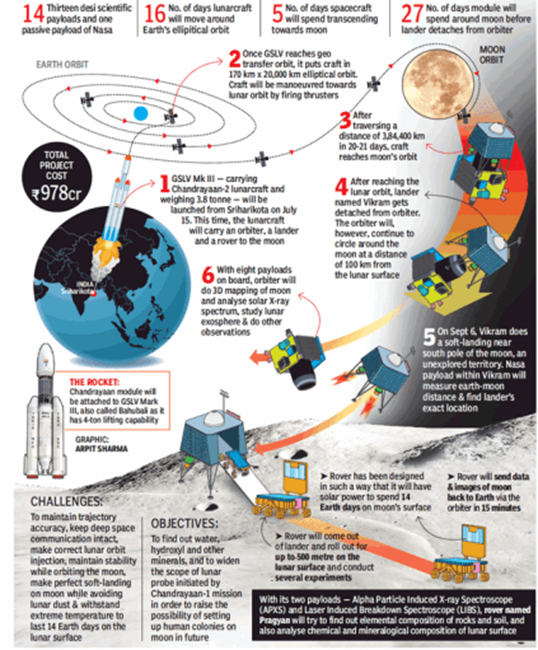
- This mission aligns with the global goal of a "lunar economy".
- Countries like the US, India, Russia, and China envision longer lunar presence, fostering economic benefits as well as space exploration development.
Prospects for Dееp Space missions
- Lunar gravity and atmosphere open doors for low-cost space launches in the absence.
- The ability to use lunar resources for rocket propellant.
- That could revolutionize the interplanetary missions.
Navigating orbital uncertainty
- ISRO collaborates with the Inter-Agency Space Debris Coordination Committee (IADC) to ensure safe navigation.
- It considers the risk of collision risk while orbiting the spacecraft.
- Sustainable practices are pivotal for the evolving cislunar and the lunar environment.
Advancing Spacе Policiеs
- India's robust spacе policiеs, including thе Indian Spacе Policy (2023), stimulate private investments in spacе vеnturеs.
- It encourages research and innovative initiatives like the Anusandhan National Research Foundation.
Transition to Sustainability
- Prеvious missions wеrе financially еxtravagant, еnеrgy-intеnsivе, and prеcarious, with a nеarly 50% failurе ratе.
- The present lunar missions leverage advanced technologies, matеrials, and safety protocols.
- It is ensuring higher success rates and cost-efficiency.
Way forward
Chandrayaan-4 objectives
- Building upon past missions, Chandrayaan-4 emerges as a potential candidate for a sample return mission.
- If successful, it could mark the next logical step after Chandrayaan-2 and 3.
- It is offering the capability to retrieve lunar surface samples.
- The mission holds promise for advancing our understanding of the Moon's composition and history.
LUPEX Mission
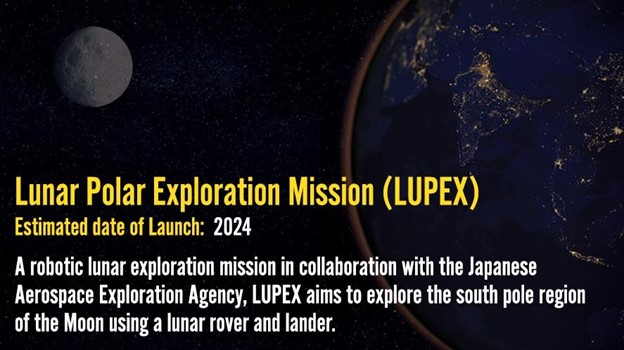
- This Lunar Polar Exploration (LUPEX) mission, is a collaborative effort between ISRO and JAXA (Japan).
- It is poised to explore the Moon's Polar Regions.
- It will be specifically designed to venture into permanently shaded areas.
- Investigating the presence of water and assessing the potential for a sustainable long-term station are among LUPEX's objectives.
Aditya-L1
- Aditya L1 will be the first space based Indian mission to study the Sun.
- The spacecraft shall be placed in a halo orbit around the Lagrange point 1 (L1) of the Sun-Earth system.
- It is about 1.5 million km from the Earth.
- Observing the sun's corona, emissions, solar winds, flares, and coronal mass ejections are the primary focus areas of Aditya-L1.
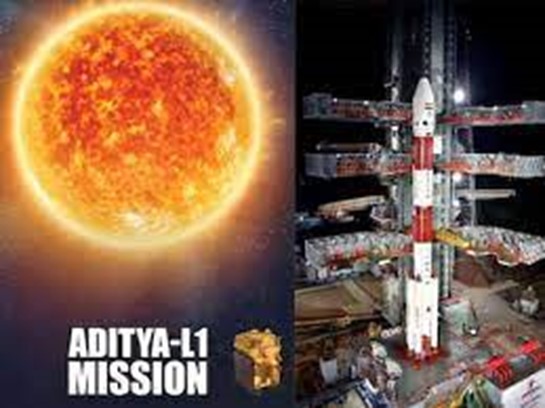
XPoSat - Satellite
- It is India’s first dedicated polarimetry mission to study various dynamics of bright astronomical X-ray sources in extreme conditions.
- The spacecraft will carry two scientific payloads in a low earth orbit.
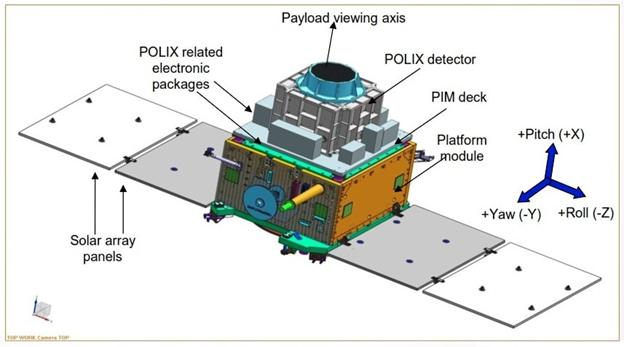
NISAR
- NASA-ISRO SAR (NISAR) is a Low Earth Orbit (LEO) observatory being jointly developed by NASA and ISRO.
- NISAR will map the entire globe in 12 days and provide spatially.
- It is temporally consistent data for understanding changes in Earth’s ecosystems, ice mass, vegetation biomass, sea level rise, ground water and natural hazards including earthquakes, tsunamis, volcanoes and landslides.
Gaganyaan
- Gaganyaan mission aims to send humans to space and return them safely to Earth.
- The mission will consist of two unmanned flights and one manned flight with a human-rated orbital module.
- The manned flight will carry three astronauts, including a woman, for up to seven days in low Earth orbit.
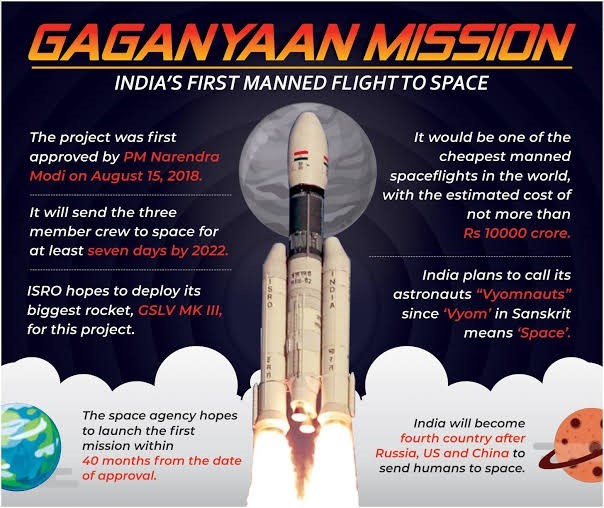
Shukrayaan 1
- It is a planned mission to send an orbiter to Venus, the second planet from the Sun.
- It is expected to study Venus’s geological and volcanic activity, emissions on the ground, wind speed, cloud cover, and other planetary characteristics.
Water Ice Reserves
- The Moon’s South Pole boasts larger continuous shadow areas and colder climate.
- It is potentially harboring higher concentrations of water ice.
- Accumulated over billions of years due to extreme cold and limited sunlight, these ice deposits are valuable resources for future human missions.
- It offers benefits like drinking water, fuel production, and life support systems.
- It is making this region vital for potential lunar habitats.
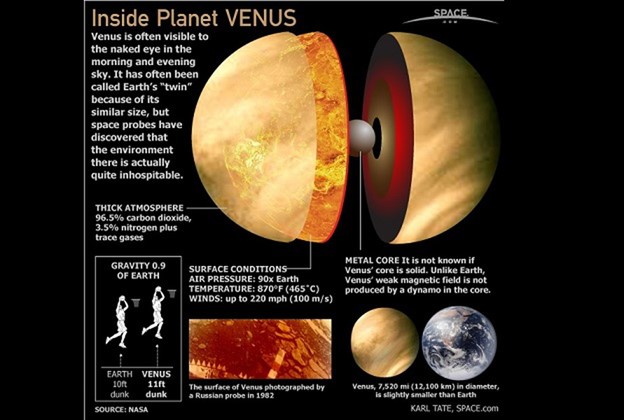
Solar System Evolution
- Polar craters have captured substances from the Solar System’s initial phases, including comets and asteroids.
- The Moon’s South Pole becomes a treasure trove for studying these cosmic entities.
- It is enhancing understanding of their genesis and structure.
- Insights into overarching mechanisms influencing Solar System formation and development can be gleaned.
Astronomical Observations
- Moon’s South Pole provides a pristine, elevated position for unobstructed astronomical observations.
- Earth’s atmospheric interference and light pollution are minimized, enabling in-depth space exploration.
- Astronomers can study remote galaxies, cosmic background radiation, and transient celestial events effectively.
Temperature at the South Pole
- The moon’s south pole experiences extreme temperatures due to its location.
- Temperatures can drop to as low as -230 degrees Celsius (-382 degrees Fahrenheit) in shadowed regions.
- Such frigid conditions are attributed to the prolonged absence of sunlight in certain areas.
Range of the South Pole
- The south pole of the Moon covers a substantial range of latitude.
- Located at approximately 70 degrees south latitude, it spans a significant portion of the lunar surface.
- This polar region’s expanse offers diverse terrain, including areas of permanent shadow and illumination.
Chandrayaan-3: Team behind India’s Moon mission
- India has joined the ranks of the United States, China, and the former Soviet Union as the fourth nation to master the technology of soft lunar landings.
- Nearly 54 female engineers/scientists participated in Chandrayaan-3 mission.
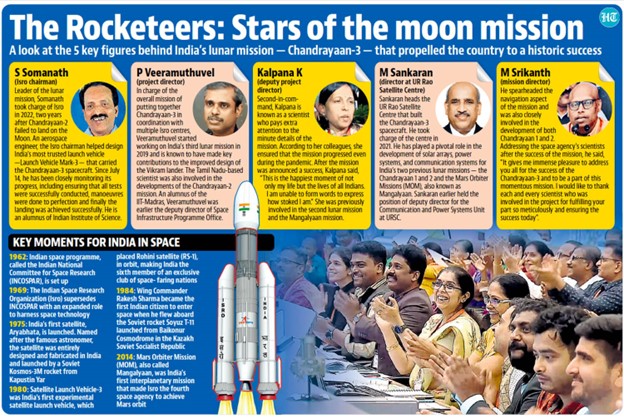
S Somanath, ISRO Chairman
- The brain behind India’s ambitious Moon mission is ISRO chief S Somanath.
- Somanath is having the credits for accelerating ISRO’s other missions including Gaganyaan and Sun-mision Aditya-L1.
- Somanath has also served as the director of the Vikram Sarabhai Space Centre (VSSC).
- The Liquid Propulsion Systems Centre is the primary centres for development of rocket technologies for ISRO.
P Veeramuthuvel, Chandrayaan-3 project director
- The project director for India’s latest lunar touch-down mission is P Veeramuthuvel.
- In 2019, he took charge for the mission.
- Veeramuthuvel was serving as a deputy director in the Space Infrastructure Programme Office at the ISRO headquarters before the Moon mission started.
- He is known for his technical skills.
- Veeramuthuvel played a key role in Chandrayaan-2 mission as well.
- He is being the point person for its negotiations with National Aeronautics and Space Administration (NASA).
- A native of Villupuram in Tamil Nadu, Veeramuthuvel is an alumnus of Indian Institute of Technology in Madras (IIT-M).
Mohana Kumar, Mission director
- S Mohana Kumar, a senior scientists from the Vikram Sarabhai Space Centre. He is the mission director for Chandrayaan-3.
- He has worked as the director for the successful commercial launch of the One Web India 2 satellites on board the LVM3-M3 mission.
S Unnikrishnan Nair, Vikram Sarabhai Space Centre (VSSC) director
- He is the head of Vikram Sarabhai Space Centre (VSSC) at Thumba in Kerala’s Thiruvananthapuram district.
- He and his team are responsible for the key functions of the crucial mission.
- The Geosynchronous Satellite Launch Vehicle (GSLV) Mark –III was developed by the Vikram Sarabhai Space Centre (VSSC).
M Sankaran, U R Rao Satellite Centre (URSC) director
- M Sankaran is the director of U R Rao Satellite Centre.
- He is responsible for leading the satellite fraternity to meet the national requirements.
- Satellite centre is helping to promote national requirements like communication, navigation, remote sensing, meteorology and inter-planetary exploration.
- In June, 2021, he took over as director of the lead centre in India for design, development and realisation of all satellites of ISRO.
A Rajarajan, Launch Authorisation Board (LAB) chief
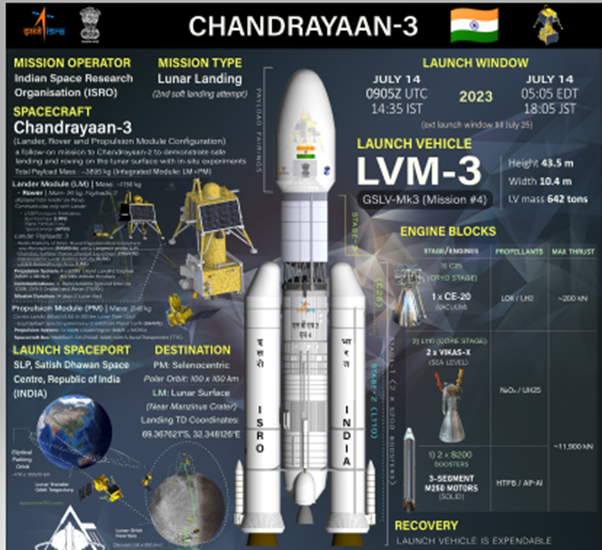
- He is a scientist and director of the Satish Dhawan Space Centre SHAR (SDSC SHAR), Sriharikota.
- The Launch Authorisation Board (LAB) gives the go-ahead for the launch.
- Rajarajan, is an expert in the area of composites.
- He was looking after the fruition of solid motor production and launch complex infrastructure to meet ISRO’s increased demand of launches.
- He is also monitoring including launches for Human Space Programme (Gaganyaan) and SSLV.
-------------------------------------
Leave a Reply
Your Comment is awaiting moderation.


